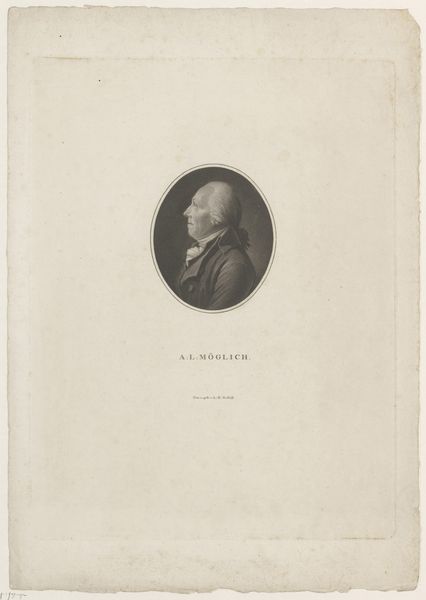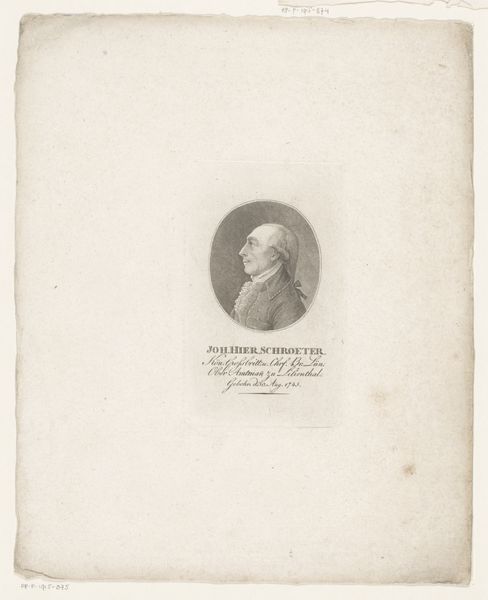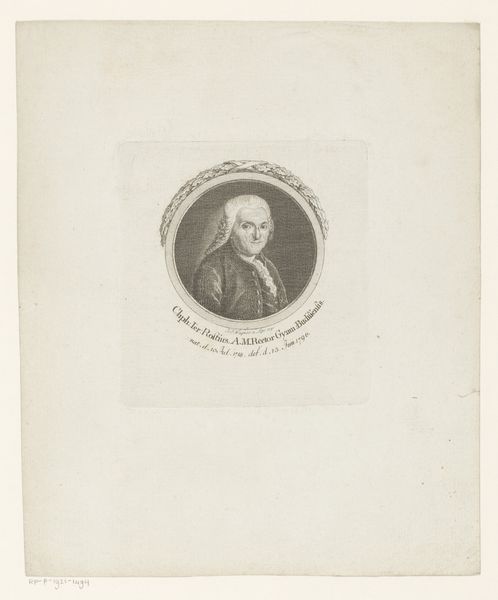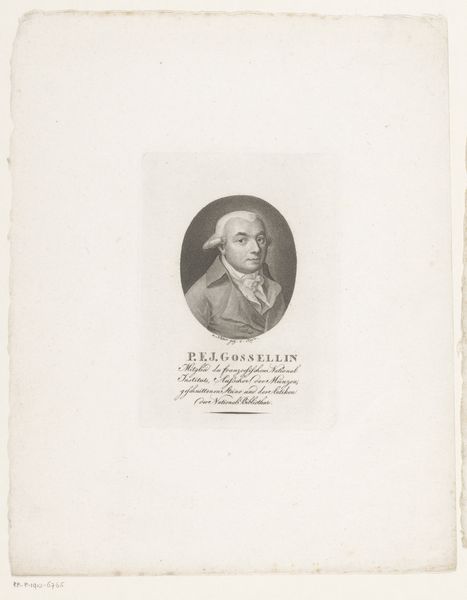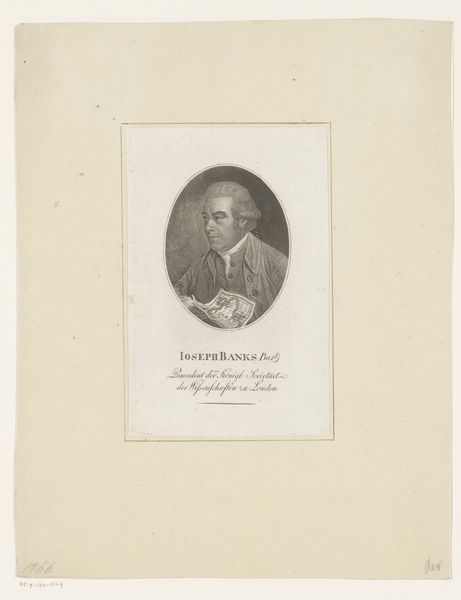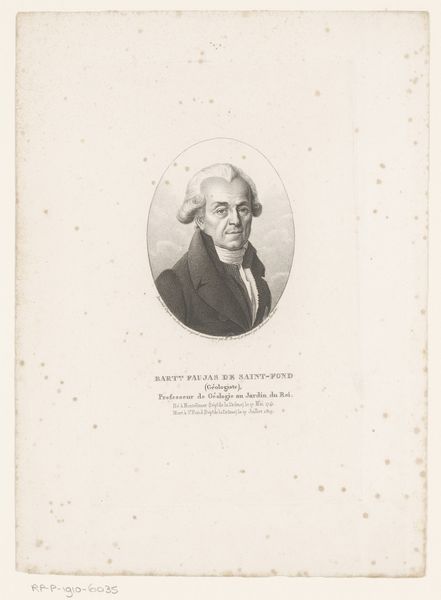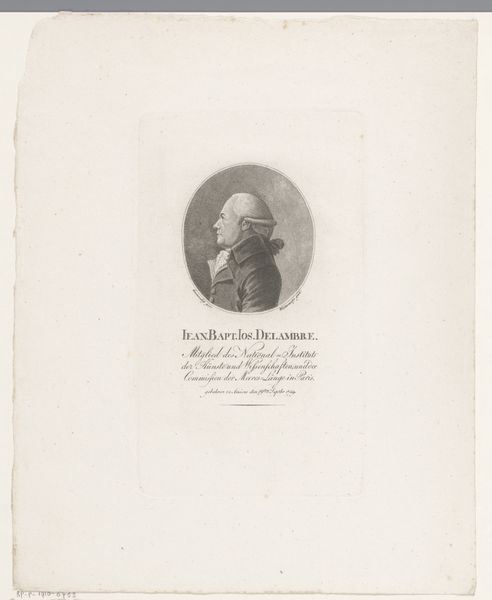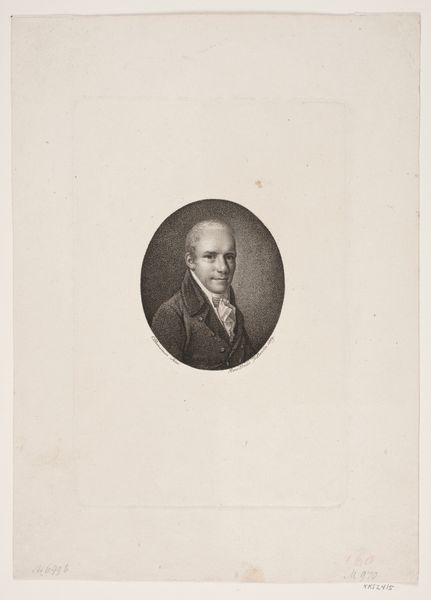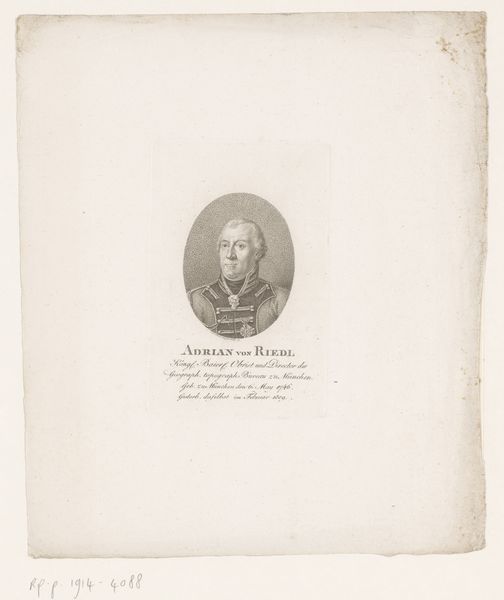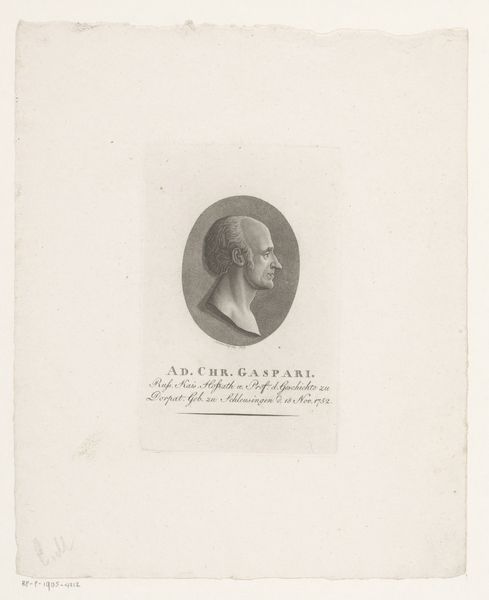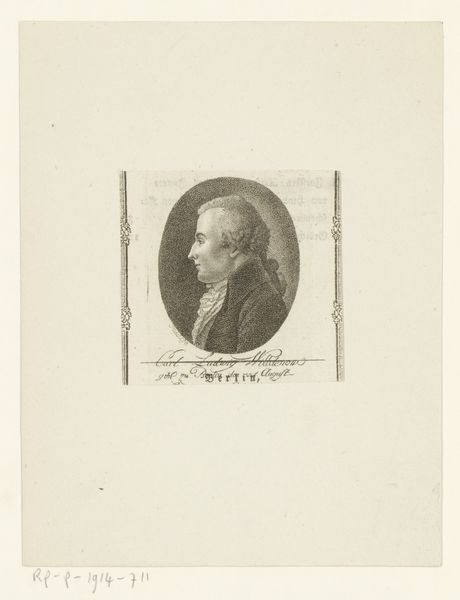
print, engraving
#
neoclacissism
#
16_19th-century
# print
#
academic-art
#
engraving
Dimensions: height 198 mm, width 140 mm
Copyright: Rijks Museum: Open Domain
Curator: Standing before us, we have an engraving titled "Portret van Franz Volkmar Reinhard" crafted in 1806 by Leonhard Heinrich Hessell. It's currently part of the Rijksmuseum collection. The artwork belongs to the Neoclassical movement of the 19th century, and falls into the realm of academic art. Editor: My first impression is one of formal restraint. The oval portrait shape and monochrome palette suggest a certain level of social decorum and historical weight. It almost feels like gazing upon a monument. Curator: Absolutely. This print embodies the Neoclassical period's emphasis on order and reason, reflecting the subject's status and profession. Reinhard was a prominent figure, holding positions such as Royal Saxon Upper Court Preacher, Church Councillor and Upper Consistory Assessor. Editor: Right. I can see that. The sharp lines achieved through engraving emphasize the crispness of his clerical attire, immediately positioning him within a structure of power. Curator: Indeed. Prints such as this portrait were tools for constructing and disseminating an individual's image within specific social and intellectual circles. They circulated portraits of noteworthy figures. The inscription helps solidify this idea, spelling out Reinhard's impressive title. Editor: I’m interested in the slight tension between the formal presentation and the subtle vulnerability evident in his expression. There is a softness there that transcends his societal role. Do you see that challenging the dominant narratives? Curator: While the image indeed suggests the power structure, prints like these were frequently idealized. Hessell may have softened some of Reinhard's features to portray him more agreeably for public consumption, aligning it with the standards of the era. Editor: That said, It makes you wonder about the lives and positions of regular church-goers during this same era, how did they interpret images of religious power like this? Did they view this representation of power with trust, contempt, envy? Curator: That's a relevant point that expands the possible narrative around the work. Thinking of the artwork's place within its own socio-political context allows us to view it as something much more significant than mere historical documentation. Editor: Definitely. Looking at this engraving through an intersectional lens makes one reflect on how class, power, and social position shaped both Reinhard’s identity and the artist's depiction. Curator: Precisely. It’s this continuous contextualization and social awareness that provides richness to historical and artistic discourse. Editor: It's the layers of social implication here, and its relevance to historical canons, that have particularly captured my attention.
Comments
No comments
Be the first to comment and join the conversation on the ultimate creative platform.
